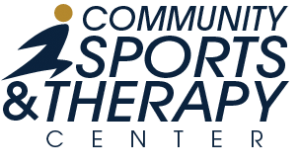Torticollis? Plagiocephaly? What do these medical terms even mean? Many parents are not aware of these diagnoses until they are prescribed from their child’s pediatrician. March 20th is Plagiocephaly & Torticollis Awareness Day and our goal is to educate you on what these terms mean, what to look for, and how to address any concerns.
First, what is Torticollis?
Torticollis is the consistent tilting of an infant’s head to one side, generally combined with rotation to the opposite side. This is often due to tightened muscles on one side of the neck, which can cause your baby’s head to remain at a tilt or rotation.
Torticollis in infants in common – some studies report that it affects 3 in every 100 babies. Fortunately, in most cases infant torticollis is easily treatable.
What are the signs and symptoms of infant torticollis?
Many babies are born with torticollis due to their position in utero. However, you may not notice it until 6-8 weeks after birth when they begin to gain more head and neck control.
Signs that your child may be developing torticollis include:
- Head tilting or rotating to one side
- Consistently moving into the same head position when in their car seat or other positions such as laying on their back
- Limited range of motion in their head and neck
- Breastfed babies may prefer one side over the other
- Other musculoskeletal problems may be present such as hip dysplasia
- The most commonly noticed symptom is plagiocephaly, or a flat spot
What is plagiocephaly?
Plagiocephaly is a commonly noticed symptom that can also occur if the child has torticollis. This is a flattening of one side of the skull, which can be the result of your child’s head being consistently positioned in the same way in a car seat or when laying on their back.
What do I do if I am concerned my child shows signs of infant torticollis?
If you are noticing these issues, it is recommended that you discuss this with your pediatrician/doctor at the next well baby appointment. It is best to address these concerns early after onset to minimize any tightness that can develop.
How can I prevent these issues from occurring?
While many babies are born with torticollis, postural torticollis can also develop. According to the American Physical Therapy Association this is often the result of a lack of variety of positions, such as when the child is consistently placed in a car seat or other baby “container” for extended periods of time.
It is recommended that the baby have SUPERVISED tummy time every day while they are AWAKE to allow him/her to develop strength and head control in various positions. It is also recommended to limit prolonged amounts of time with the infant positioned in various pieces of equipment, such as a car seat, swing, bouncy seat, or devices where the infant has pressure on the back of the head.
Pediatric physical therapy services may be prescribed for a child diagnosed with torticollis and plagiocephaly.
Physical therapy can assist caregivers with an evaluation of the torticollis and plagiocephaly to establish an appropriate individualized treatment plan that includes:
- Strengthening activities for neck muscles
- Correcting muscle imbalance
- Stretches to gain pain-free movement (range of motion)
- Exercises to improve postural control and symmetry
- Guidance for correct positioning of infants
- A home-exercise program to continue gentle rehabilitation at home

